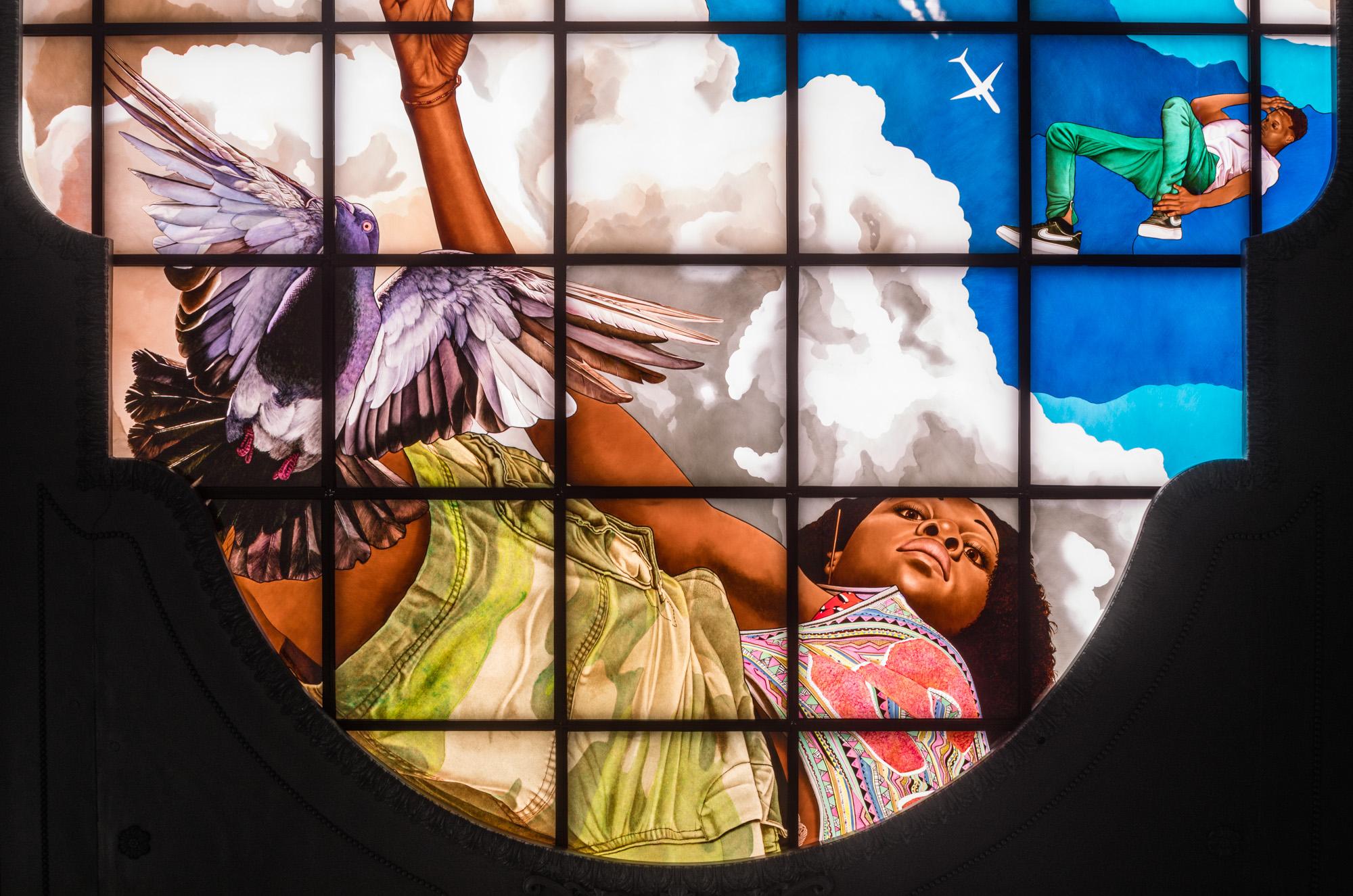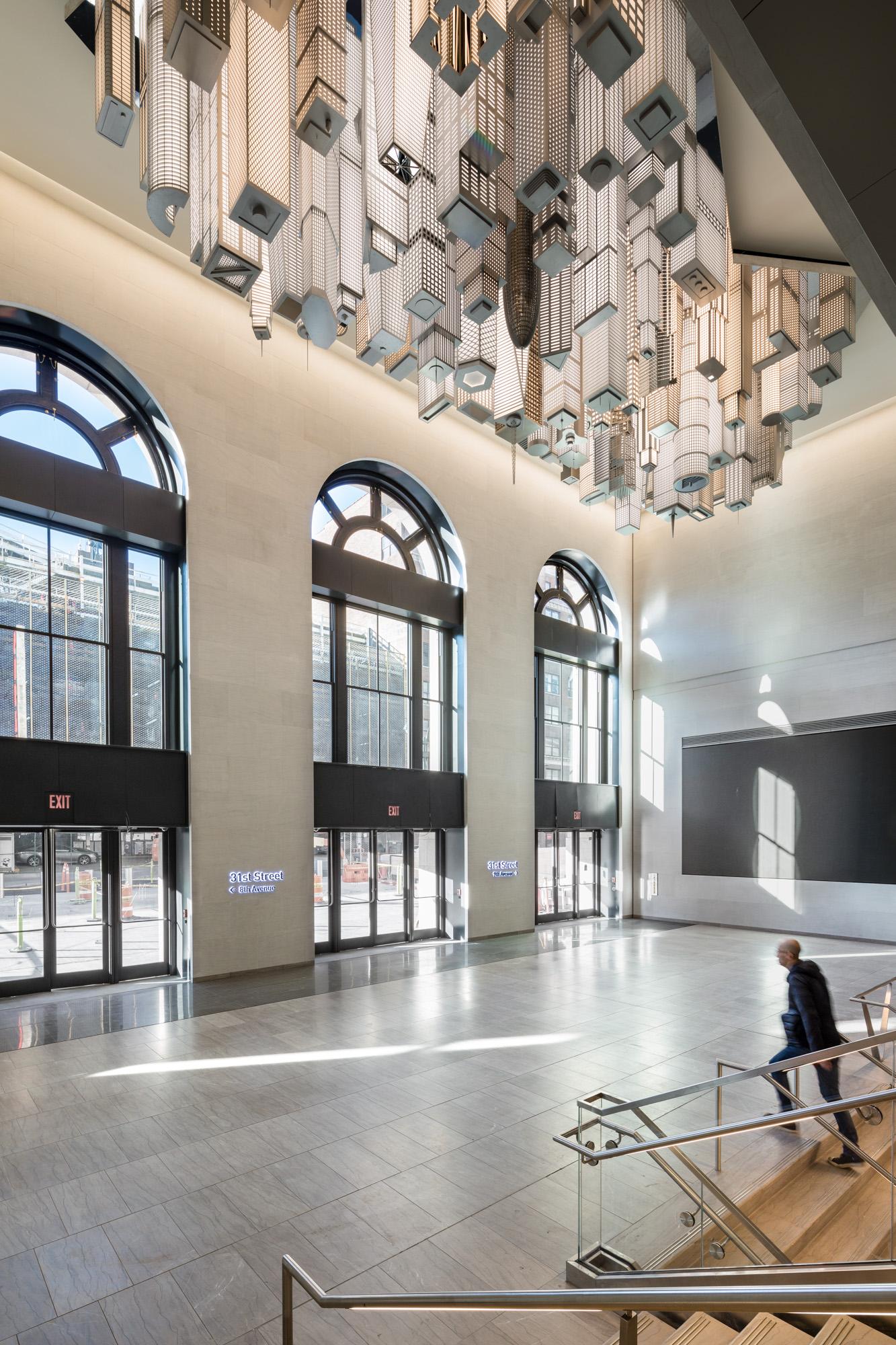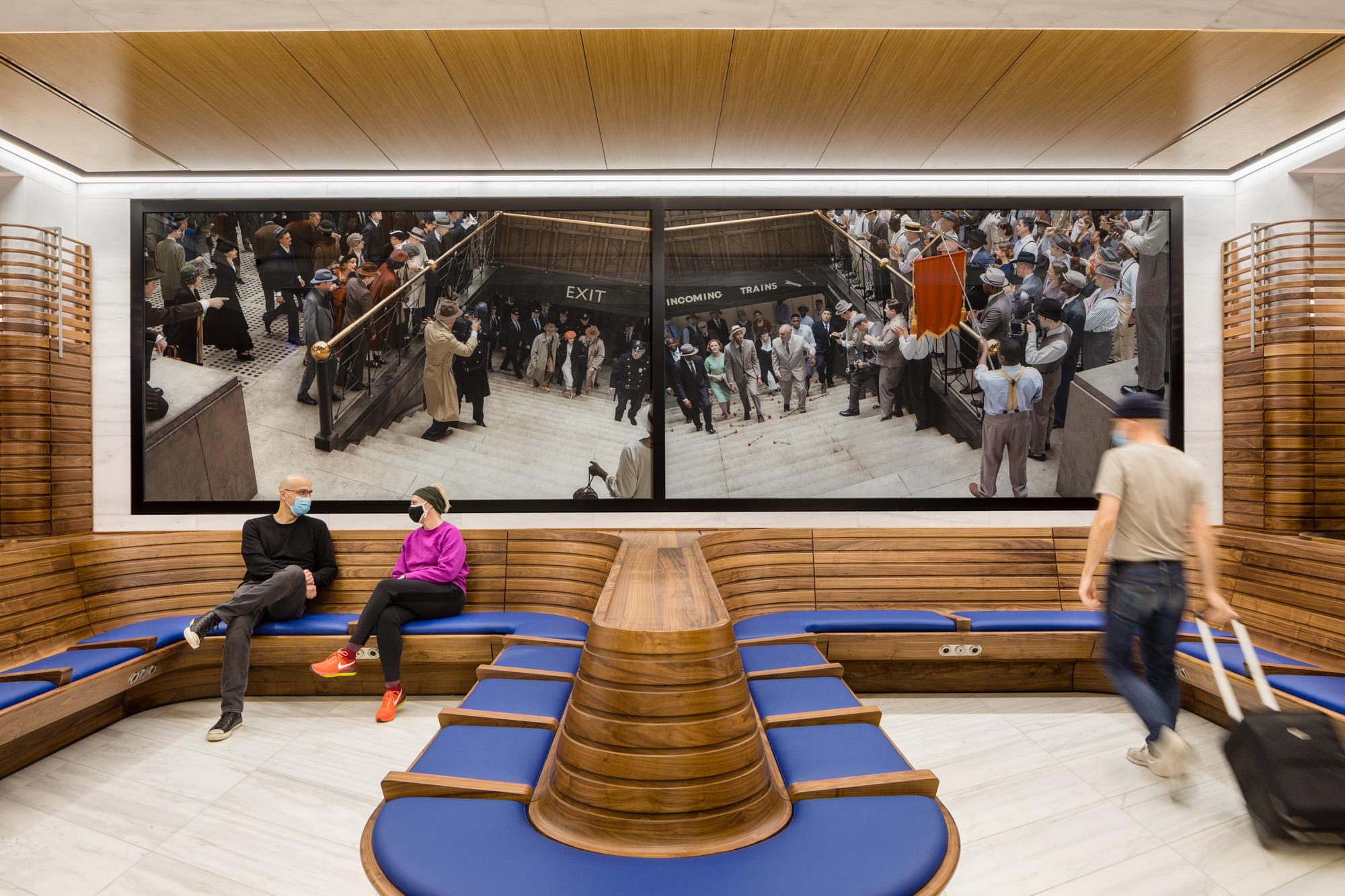Nearly six decades later, there is finally a new train station worthy of taking the place of the lost Penn Station. Opened last week by Governor Andrew M. Cuomo, Moynihan Train Hall seeks to replicate the drama and beauty of the original Penn Station.
Housed in the renovated 1912 James A. Farley Post Office, the building is a modern tribute to the station of the past. Providing a new hub for Amtrak and the Long Island Rail Road, the space includes a one-acre sky-lit atrium, free wifi, a floating clock, and world-class public art.
Artist duo Elmgreen & Dragset (Berlin-based Michael Elmgreen and Ingar Dragset) have contributed The Hive, their own miniature metropolis. The several dozen buildings reference major landmarks around the world. Dangling above travelers’ heads, the glowing city is a reminder of our small part in the grand scheme of things, a feeling that New York often evokes.



























![DEl Kathryn Barton [Australian b. 1972] the more than human love , 2025 Acrylic on French linen 78 3/4 x 137 3/4 inches 200 x 350 cm Framed dimensions: 79 7/8 x 139 inches 203 x 353 cm](/sites/default/files/styles/image_5_column/public/ab15211bartonthe-more-human-lovelg.jpg?itok=wW_Qrve3)



